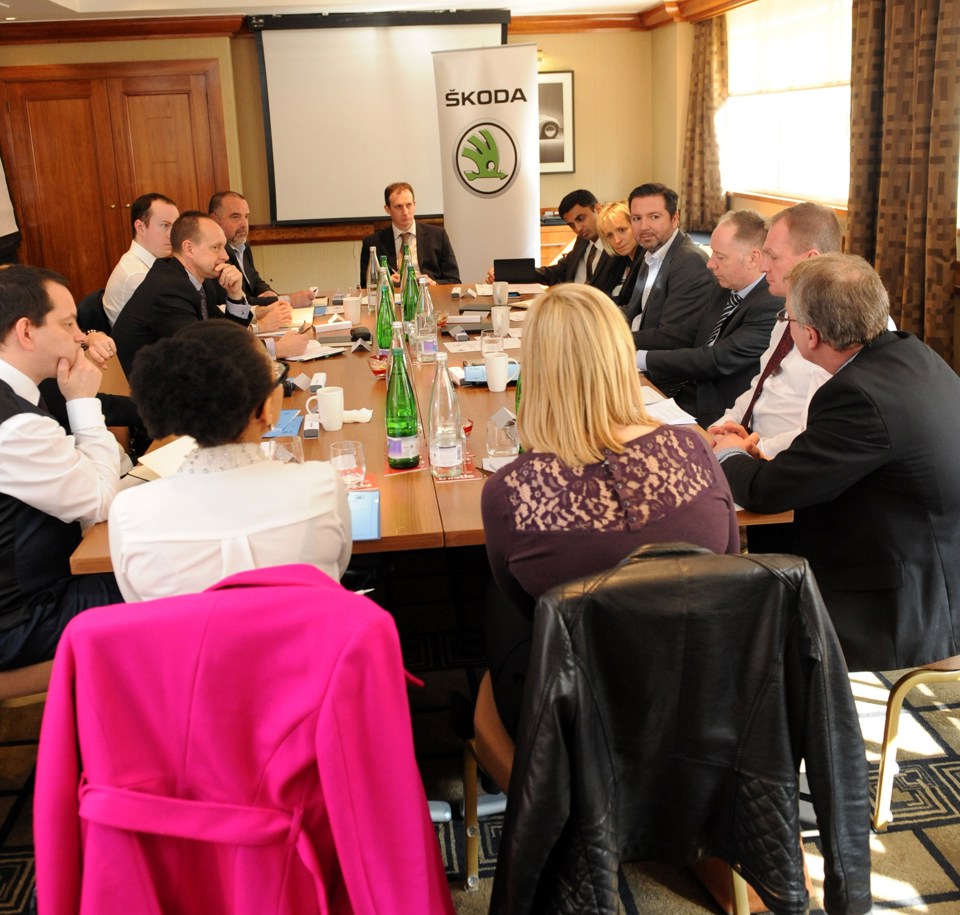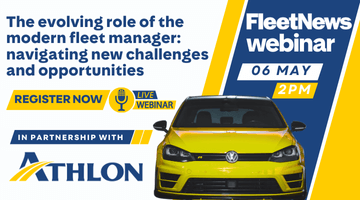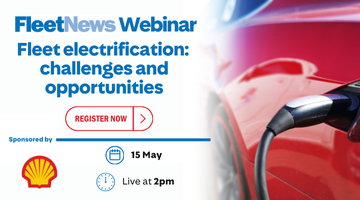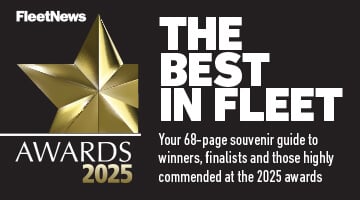Technology continues to play an increasingly important role for fleets, with many adopting developments such as telematics or electric vehicles to reduce costs and emissions.
This was a common theme among the Fleet News Awards nominees who attended a recent Fleet News roundtable, sponsored by Škoda.
The organisations represented around the table operated a mix of vehicles, with fleet sizes ranging from around 100 to more than 30,000.
When did you fit telematics to your vehicles?
Eric Bristow: We put telematics into vans around seven or eight years ago, to track vehicles, and that produced a whole load of data that we just weren’t using. A couple of years ago I developed a programme to sift through that data, primarily looking at speeding. Our vans are liveried with our logo and the royal warrant, so we need to be sure that we have good, safe drivers. To do this we adopted a speed monitoring policy.
Aaron Powell: We’ve had telematics for about six months in the south west, and are rolling it out across the country now.
Delegates
Monica Guise, Transport manager, University of Birmingham
Sudhanva Rajashekara, Fleet manager, Z-Tech
Karen Sladen, Fleet manager, Experian
Eric Bristow, Fleet manager- service division, Hobart
Simon Wakeford, Supplier relationship manager, Legal & General
Duncan Webb. Director of fleet, BT Fleet
Mark Woodworth, Project manager, Speedy Hire
Gillian Joyce, National fleet manager, Post Office Ltd
Graham Telfer, Fleet manager, Gateshead Council
Aaron Powell, National fleet manager, HSS Hire
Tony Chalk, Head of fleet, Police Scotland
Martin Gay, Contract hire & leasing account manager - North, Škoda
Lerato Barrett, Area fleet manager for London & Home Counties, Škoda
What impact has telematics had on your fleet?
Eric Bristow: We found that when we started monitoring drivers, we were getting 20 to 25 instances of speeding a day. Now we get three. If a driver has been speeding, we tell them to slow down and keep to the speed limit. Once they started doing that, we found that both our tyre wear and our brake usage also decreased. We have attributed that to the speed monitoring as we can’t see anything else that could necessarily cause that. This saves us £12,000 a year.
Aaron Powell: We worked out that we needed to reduce our fuel use by 8% to pay for our Ashwoods Lighfoot telematics system, and we’re actually saving 12%.
Graham Telfer: We also use Ashwoods Lightfoot. This has been really helpful to us, because it uses a traffic light system in the cab to give a driver immediate feedback on harsh driving events: red is a violation, green is OK. Our target is 95% green and we rarely go below that.
Eric Bristow: There are a lot of companies which will put flashing lights in cabs, but as far as I’m concerned there are already too many distractions in there. I’m not putting anything more in the cab, but I am leaving it up to the driver.
Will telematics enable you to further improve your fleet?
Eric Bristow: We are getting to the point where our drivers are now monitoring themselves. So, instead of lowering the bar and dropping our speed limit and going through the process again, we will start to look at harsh braking and acceleration, but not by taking a punitive approach. We’re in negotiations at the moment so haven’t introduced this initiative yet. We’re not going to tell employees they’re braking or accelerating too hard, but we will actually reward the top drivers. We have developed a system where each driver starts the month with 1,000 points and for every incident of harsh braking, acceleration or speeding, points are deducted. At the end of the month, the top 10 drivers will get a bonus. This will mean that, from the bottom, we are saying drive safely, drive within the limits and – from the top – we are saying thank you very much for doing so.
Aaron Powell: Because we’re saving more on fuel than we’re spending on telematics, we are looking to fund a bonus scheme for drivers.
What is your fleet’s approach to ultra-low emission vehicles?
Monica Guise: Our policy is that when we talk about procuring the next vehicle, the user has to make a case as to why it can’t be electric. Electric vehicles (EVs) are our first choice. Of course, if you want a 7.5-tonne vehicle or a cherry picker that isn’t possible, but in the majority of cases we could be procuring an EV.
The university has made a commitment to reduce its overall carbon footprint by 20% by 2020 compared to 2005/6 and fleet forms a key part of that. Because of this, we’ve suggested that 40% of our fleet will be electric by then. We are currently at 18%, but this means that, over the next two to three years, we will really be pushing EVs.
We are in a lucky position because most vehicles just go round campus or around Birmingham so we haven’t got the challenges that many fleets face with range and where vehicles are kept at night because they remain on campus.
Simon Wakeford: We’re trying to promote EVs as best we can, but they don’t quite work for us yet because of our mileages. We’ve got a massive car park at our main office and I asked our facilities team if we could have some EV charging points and they said: “No, we’re not spending the money.” So that’s another challenge. It’s not that expensive in the scheme of things, but I haven’t got the budget to do it.
Sudhanva Rajashekara: Last year we had an Energy Saving Trust review and it told us 17 of our vehicles could be replaced by EVs. We took that up as a challenge and acquired two Nissan e-NV200 vans. We’ve been running these for four months and they are doing pretty well.
We have gone out to tender to win a contract with another organisation and we have said that we will use only EVs if we win that business. The organisation came back to us saying it will go ahead with this particular contract if we use EVs because no carbon footprint can be passed on to it, so we are sticking to that.
We are also bringing in hybrid vehicles for our managers who travel further away than is feasible with an EV. We recently looked at acquiring a hybrid car but no one was ready to accept that. However, we incentivised it and one of our managers did take it up. This has worked out well and now our managing director is also moving into a hybrid from a diesel, and that is motivating our other managers to take up such vehicles, so it is working out pretty well for us.
Have you introduced any other cost-saving initiatives in the past 12 months?
Graham Telfer: We’ve gone from using premium tyres to budget tyres. In the past – in the 1970s or 1980s – tyres would do 30,000 miles, no problem. Now you put a tyre on a car like a Volkswagen Passat and if you get 15,000 miles you are doing well. We also have to replace a number of tyres through damage after 3,000 to 4,000 miles, so we’ve now gone down to budget and shaved £40,000 off our tyre costs.
How do you see the fleet manager’s role developing in the future?
Tony Chalk: I think the fleet manager’s role will be at board level. Previously, the fleet manager was coming from the workshop floor, like I did, but that’s been elevated because, as organisations get bigger and bigger, you need to be good at finance, you need to be good at managing staff, you need to know about insurance. It changed dramatically a few years ago from when it was just keeping the workshop ticking over, because of the capital and revenue involved in it now and the savings expected.
Duncan Webb: The skillset of a fleet manager is probably one of the most diverse of anyone in a company.


















Mike Gillson - 09/06/2015 14:06
I agree with the last comments and believe that the Fleet Manager role is becoming a key board position on managing movement & mobility. Finding the most tax efficient, green, cost effective and compliant solutions crosses existing boundaries and requires a 'whole company' approach, working towards the overall business needs. Sadly, as stated, you can plan a fleet of EVs, but if Facilities say 'No' to charging points, then the whole plan is scuppered.